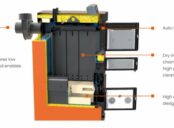Skolverket Digitalisering: Framtiden för utbildning i Sverige

Introduction:
Skolverket Digitalisering has become a vital part of the Swedish education system, revolutionizing the way we teach and learn. In this comprehensive article, we will provide an in-depth overview of Skolverket Digitalisering, its various types, popular platforms, quantitative measurements, and a discussion on their differences. We will also delve into the historical context, discovering the advantages and disadvantages associated with different forms of Skolverket Digitalisering.
What is Skolverket Digitalisering?

Skolverket Digitalisering refers to the integration of technology and digital tools in education, aiming to enhance teaching and learning experiences. It encompasses a wide range of initiatives like e-learning platforms, educational apps, digital textbooks, and online resources. By incorporating digital elements into classrooms, Skolverket Digitalisering aims to prepare students for a rapidly evolving digital world.
Types and Popularity of Skolverket Digitalisering
1. E-learning Platforms:
E-learning platforms provide interactive learning experiences through online courses, virtual classrooms, and instructional videos. Examples include platforms like Google Classroom, Microsoft Teams, and Moodle. These platforms have gained immense popularity due to their ability to facilitate remote learning, collaboration, and personalized instruction.
2. Educational Apps:
Educational apps offer a vast array of learning tools, ranging from language learning apps to math problem solvers. Popular apps such as Duolingo, Kahoot, and Photomath have transformed the way students engage with educational content, making learning more engaging and accessible.
3. Digital Textbooks:
Digital textbooks serve as digital versions of traditional textbooks and offer interactive multimedia content, search functions, and accessibility features for students with disabilities. Platforms like Bookshelf and VitalSource have integrated digital textbooks into classrooms, eliminating the need for physical copies and allowing for continuous updates and enhancements.
4. Online Resources:
An abundance of online resources, including educational websites, open educational resources (OER), and educational YouTube channels, provide supplemental learning materials. Websites such as Khan Academy and TED-Ed have become go-to destinations for students seeking to broaden their knowledge beyond the traditional curriculum.
Quantitative Measurements of Skolverket Digitalisering
Quantitative measurements play a crucial role in assessing the effectiveness and impact of Skolverket Digitalisering. Some key metrics used for evaluation include:
1. Usage Statistics:
Tracking the number of active users, logins, and time spent by students and teachers on digital platforms provides insights into the extent of adoption and engagement.
2. Academic Performance:
Analyzing academic performance data, such as grades, test scores, and completion rates, can help identify if Skolverket Digitalisering contributes to improved student outcomes.
3. Cost Analysis:
Evaluating the cost-effectiveness of different digital initiatives, considering factors like initial investments, maintenance costs, and long-term savings, helps in determining the financial viability of Skolverket Digitalisering.
4. Student Feedback:
Conducting surveys and gathering feedback from students and teachers about their experiences with Skolverket Digitalisering provides valuable insights into its strengths and areas for improvement.
Discussion on Differences Between Skolverket Digitalisering
While all forms of Skolverket Digitalisering contribute to enhancing education, there are certain differences that should be considered:
1. Access and Equity:
The availability of technology and internet access can significantly impact the accessibility of Skolverket Digitalisering, potentially perpetuating educational disparities between urban and rural areas, and socio-economic backgrounds.
2. Interactivity and Engagement:
The level of interactivity and engagement varies across different forms of Skolverket Digitalisering. Some platforms offer more interactive features like gamification and personalized learning, while others may focus on content delivery.
3. Teacher Involvement:
Certain platforms rely heavily on teacher facilitation, while others emphasize autonomous learning. Balancing teacher-student interaction and automated content delivery plays a vital role in the effectiveness of Skolverket Digitalisering.
Historical Overview of Advantages and Disadvantages of Skolverket Digitalisering
1. Advantages:
a) Increased Access: Skolverket Digitalisering provides the opportunity for students to access educational resources and quality instruction anytime and anywhere.
b) Personalized Learning: Digital tools enable adaptive learning experiences catered to individual student needs, fostering better understanding and engagement.
c) Flexibility: Skolverket Digitalisering allows for flexible learning schedules, accommodating diverse student requirements and promoting a self-paced learning environment.
d) Multimodal Learning: Incorporating multimedia elements like videos, infographics, and animations enriches the learning experience and facilitates deeper comprehension.
2. Disadvantages:
a) Technological Barriers: Lack of access to reliable internet connection and devices may hinder students’ ability to fully participate in Skolverket Digitalisering.
b) Teacher Training: Proper training and continuous professional development are essential to ensure teachers are adept in integrating digital tools effectively.
c) Screen Time:
Conclusion:
Skolverket Digitalisering has revolutionized education in Sweden, offering an array of tools and platforms to enhance teaching and learning. By providing an overview of Skolverket Digitalisering, its various types, quantitative measurements, and a discussion on differences, this article aimed to shed light on the subject. Additionally, the historical context provided insights into the advantages and disadvantages associated with Skolverket Digitalisering. As technology continues to evolve, the future of Skolverket Digitalisering holds immense potential for transforming education and preparing students for a digitally-driven world.





















